Our verdict
Pros
- Exceptional toebox
- Remarkably stable
- Ultra-cushioned
- Midsole withstands cold temperatures
- Excellent for gym workouts and CrossFit
- Superior breathability
- Astoundingly lightweight
Cons
- Prohibitively expensive at $200
- Unnecessary carbon plate
- Durability concerns
Audience verdict
Comparison
The most similar running shoes compared
+ + Add a shoe | |||||
|---|---|---|---|---|---|
| Audience score | 84 Good! | 86 Good! | 77 Decent! | 89 Great! | |
| Price | $200 | $225 | $180 | $180 | |
| Pace | Daily running | Daily runningTempo | Daily runningTempo | Daily runningTempo | |
| Shock absorption | - | High | High | Moderate | |
| Energy return | - | High | High | High | |
| Traction | - | High | High | High | |
| Arch support | Neutral | Neutral | Neutral | Neutral | |
| Weight lab Weight brand | 9.7 oz / 274g 8.8 oz / 250g | 11.1 oz / 315g 10.8 oz / 306g | 10.1 oz / 285g 10.1 oz / 286g | 9.9 oz / 281g 9.5 oz / 269g | |
| Drop lab Drop brand | 9.4 mm 5.0 mm | 9.2 mm 5.0 mm | 6.9 mm 8.0 mm | 10.3 mm 8.0 mm | |
| Strike pattern | HeelMid/forefoot | HeelMid/forefoot | Mid/forefoot | Heel | |
| Size | True to size | True to size | True to size | True to size | |
| Midsole softness | Balanced | Soft | Soft | Balanced | |
| Difference in midsole softness in cold | Small | Small | Small | Small | |
| Toebox durability | Bad | Good | Decent | Good | |
| Heel padding durability | Bad | Good | Decent | Good | |
| Outsole durability | Good | Good | Good | Good | |
| Breathability | Breathable | Breathable | Breathable | Warm | |
| Width / fit | Medium | Narrow | Narrow | Medium | |
| Toebox width | Medium | Narrow | Narrow | Narrow | |
| Stiffness | Stiff | Stiff | Stiff | Stiff | |
| Torsional rigidity | Stiff | Stiff | Stiff | Stiff | |
| Heel counter stiffness | Stiff | Stiff | Flexible | Moderate | |
| Plate | Carbon plate | Carbon plate | Carbon plate | Carbon plate | |
| Rocker | ✓ | ✓ | ✓ | ✓ | |
| Heel lab Heel brand | 40.2 mm 35.0 mm | 46.3 mm 49.0 mm | 38.9 mm 42.0 mm | 45.6 mm 42.0 mm | |
| Forefoot lab Forefoot brand | 30.8 mm 30.0 mm | 37.1 mm 44.0 mm | 32.0 mm 34.0 mm | 35.3 mm 34.0 mm | |
| Widths available | Normal | Normal | Normal | NormalWide | |
| Orthotic friendly | ✓ | ✓ | ✓ | ✓ | |
| Season | SummerAll seasons | SummerAll seasons | SummerAll seasons | All seasons | |
| Removable insole | ✓ | ✓ | ✓ | ✓ | |
| Ranking | #236 Bottom 37% | #174 Top 47% | #344 Bottom 8% | #79 Top 22% | |
| Popularity | #233 Bottom 37% | #71 Top 19% | #162 Top 44% | #231 Bottom 38% |
Who should buy
The Hoka Transport X is a tricky shoe to recommend, but we believe it suits the following people well:
- Those who want just one shoe for absolutely everything, from running and CrossFit to going to work.
- Gym aficionados looking for a premium-quality shoe that can also handle occasional runs.
- Heavier folks who want a lot of cushioning for all kinds of sports activities or even just walking.

Who should NOT buy
One of the main issues with this shoe is its steep price tag. At $200, you could pick up an ASICS Superblast, considered by us as one of the best cushioned daily trainers on the market. And if running isn't your main focus, the Hoka Kawana is a less expensive option that works great for the occasional run.
If running isn't a priority for you, the Hoka Transport is a great all-around option for those with narrow-to-medium width feet. For a max-cushioned walking and neutral shoe, we also recommend the Hoka Bondi SR as an excellent alternative.

Cushioning
Heel stack
This is a very big shoe. In the lab, we measured a whopping 40.2 mm in the heel.
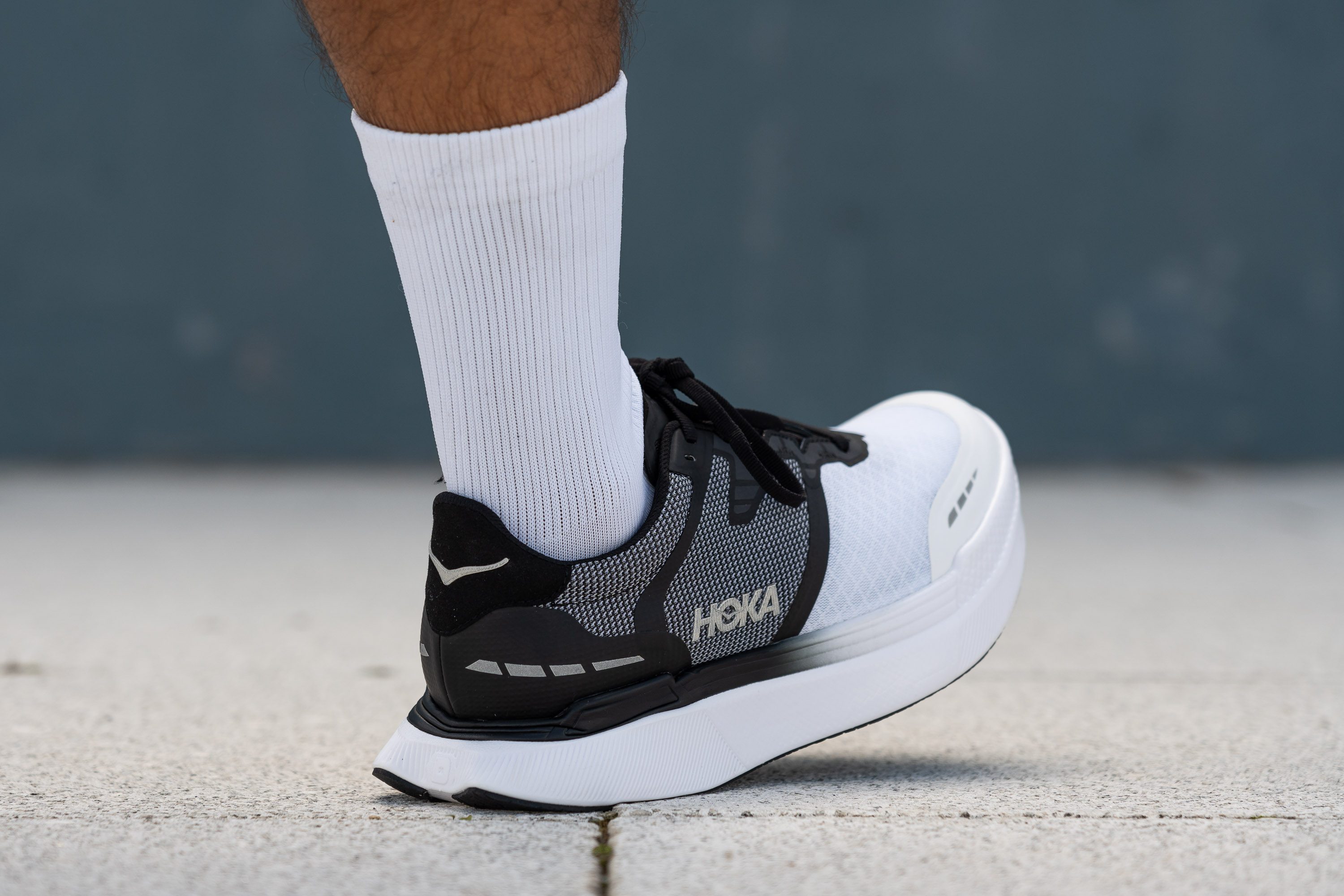
That's one of the highest measurements we've ever seen. So, if you're looking for lots of cushioning, you won't be disappointed.
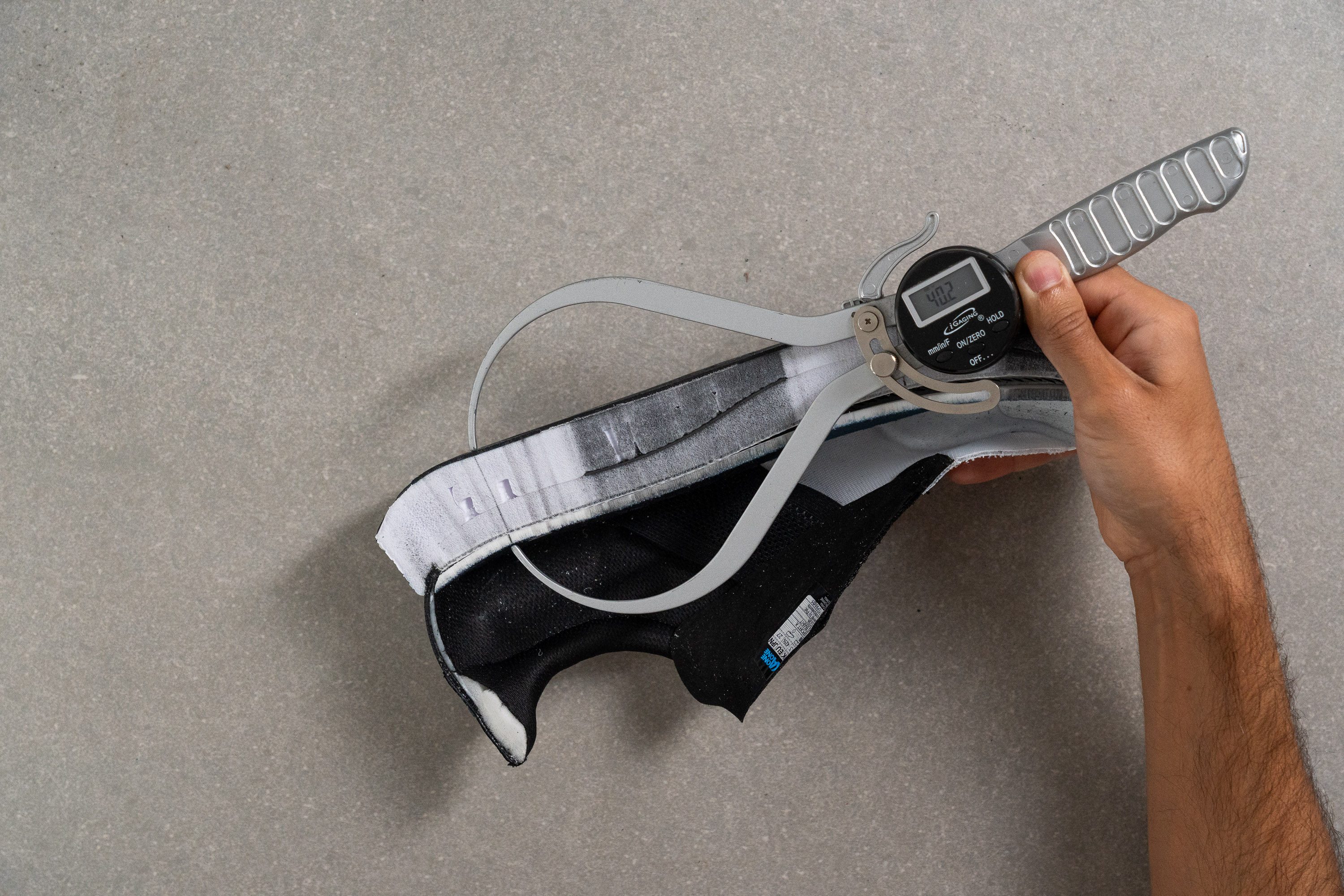
| Hoka Transport X | 40.2 mm |
| Average | 34.8 mm |
Forefoot stack
The forefoot is also quite thick, measuring 30.8 mm in our lab tests.
This pretty much means you won't get any ground feel. And that's not surprising because, like all Hoka shoes with an "X" in the name, it comes with a built-in carbon plate...
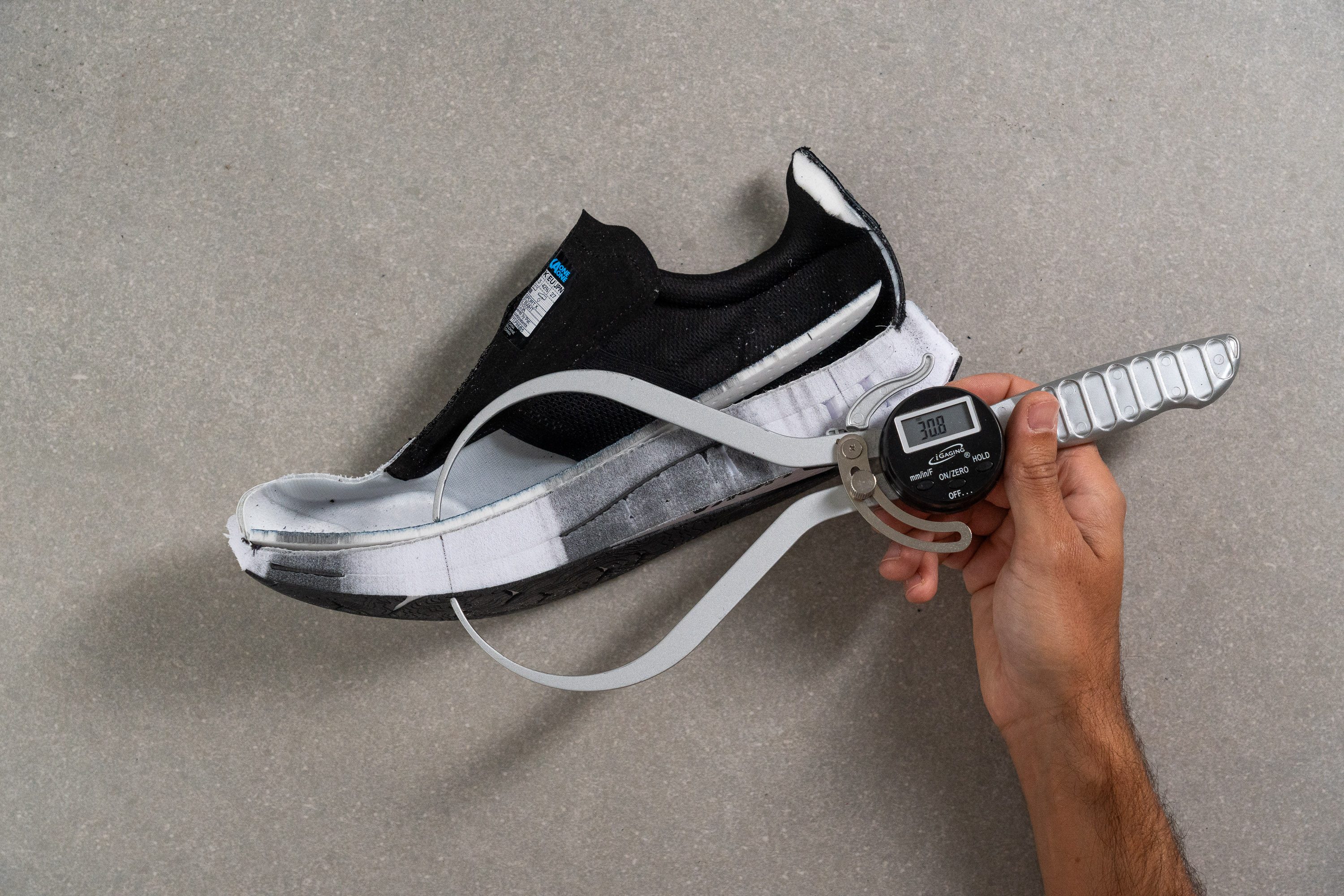
| Hoka Transport X | 30.8 mm |
| Average | 26.2 mm |
Drop
We measured a 9.4-mm difference in height between the forefoot and the heel, which is known as the heel-to-toe drop.
For many running shoes, this would be a pretty standard number. But here's the catch: Hoka claims this shoe has a 5-mm drop, which is almost half of what we found in our lab.
We can't say how Hoka does their measurements, but we can tell you they're not using the same World Athletics guidelines that we follow.
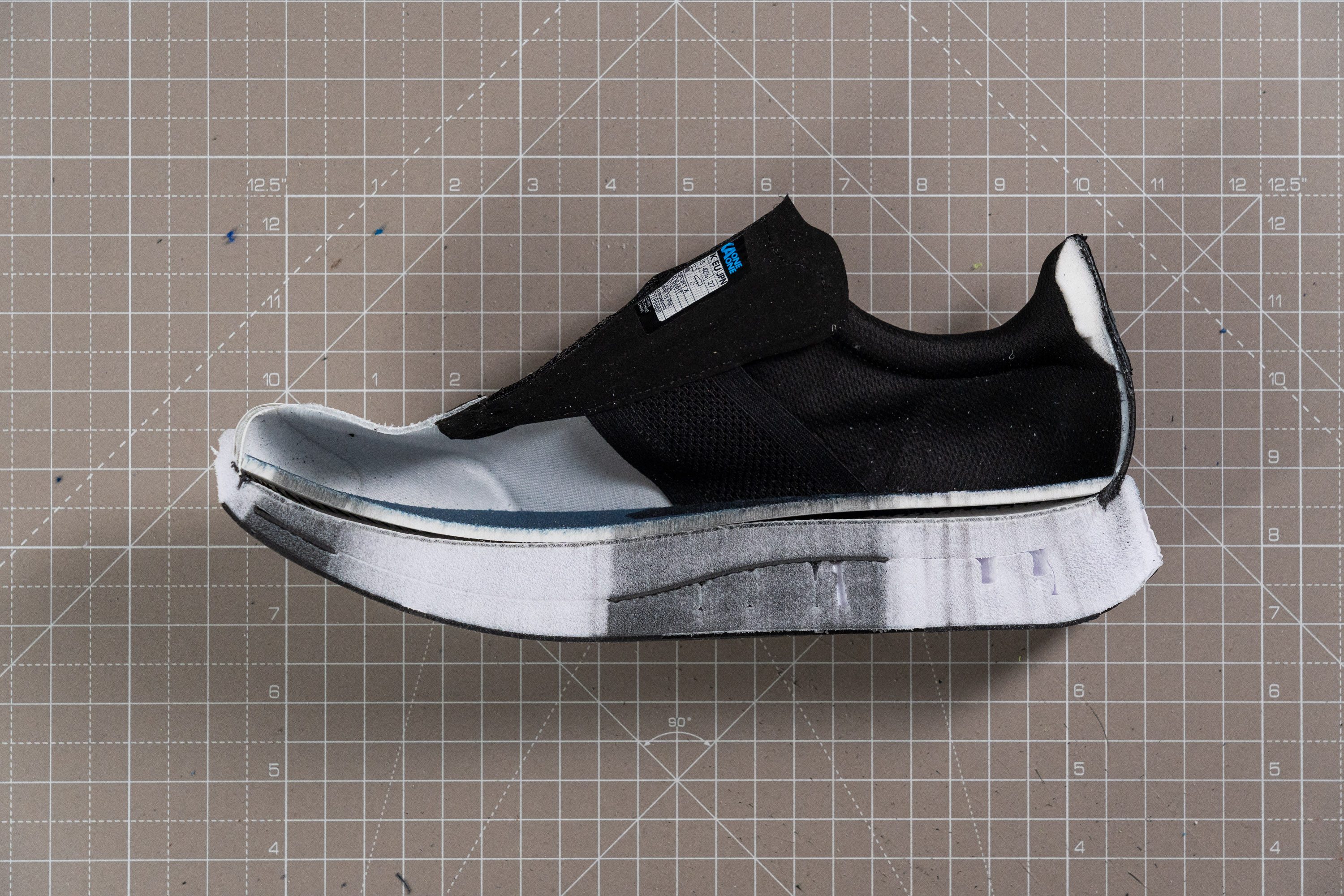
| Hoka Transport X | 9.4 mm |
| Average | 8.6 mm |
Midsole softness
In the lab, we checked the foam's softness and got a 22.8 HA reading.
These shoes don't offer the ultra-soft feel you might expect from other Hoka models. And since there's a carbon plate inside, you should expect an even firmer ride.
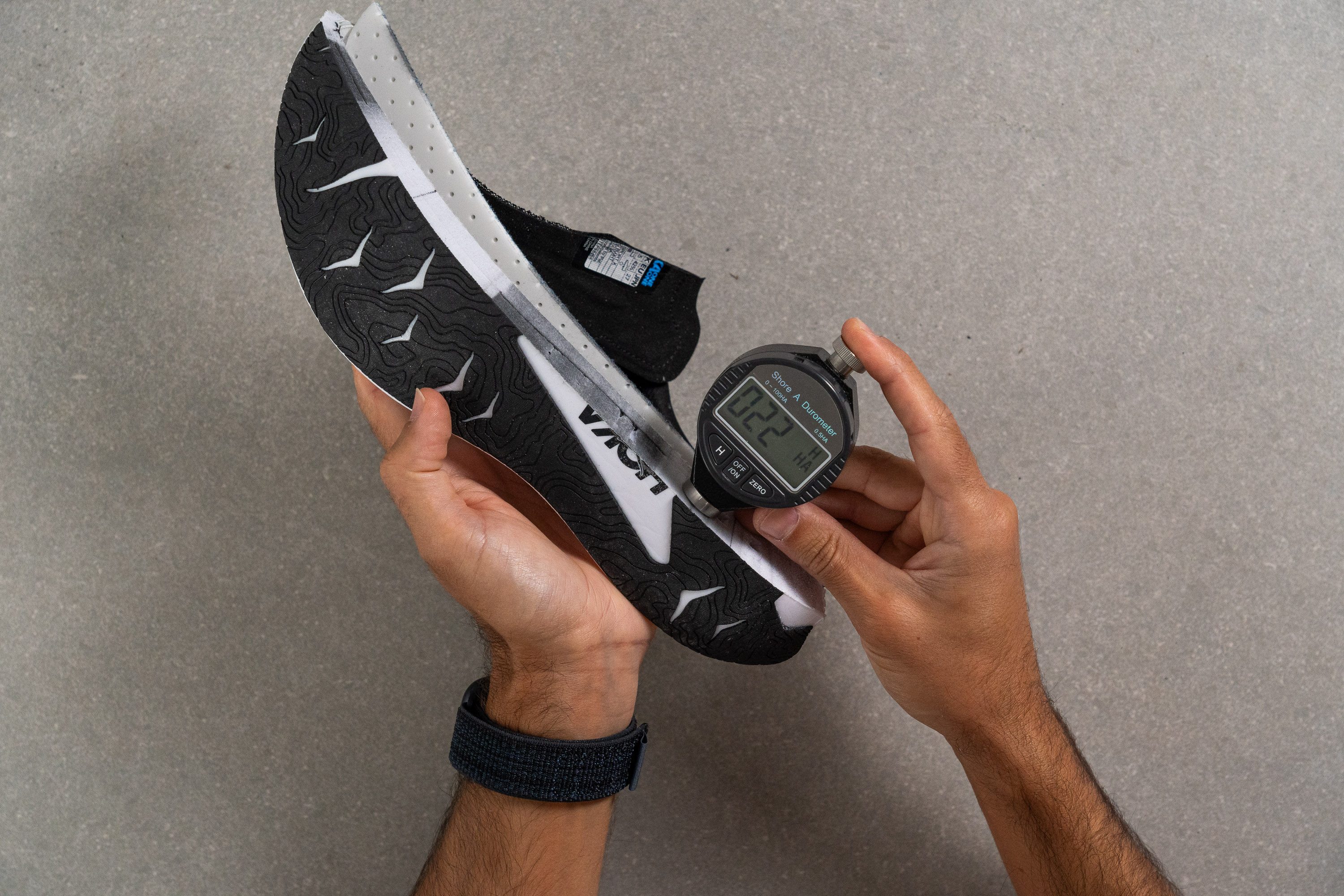
| Hoka Transport X | 22.8 HA |
| Average | 20.4 HA |
Size and fit
Size
Hoka Transport X fits true to size (28 votes).
Width / Fit
One big problem with the non-plated Hoka Transport was its super snug toebox. That feature turned away a lot of people, making it a good fit only for those with narrow feet—like most Hoka shoes.
The Transport X fixes this with a more roomy design, although still below average. We measured its width at 94.9 mm, slightly below the average.

| Hoka Transport X | 94.9 mm |
| Average | 95.1 mm |
Toebox width
We also measured the big toe area, which came in at 72.1 mm.
Why another measurement? Well, one reading never tells the full story, so we dig deeper. From our findings, this stands out as one of Hoka’s best chances for individuals with medium-to-wide feet, though it still doesn’t excel in allowing superior toe splay.
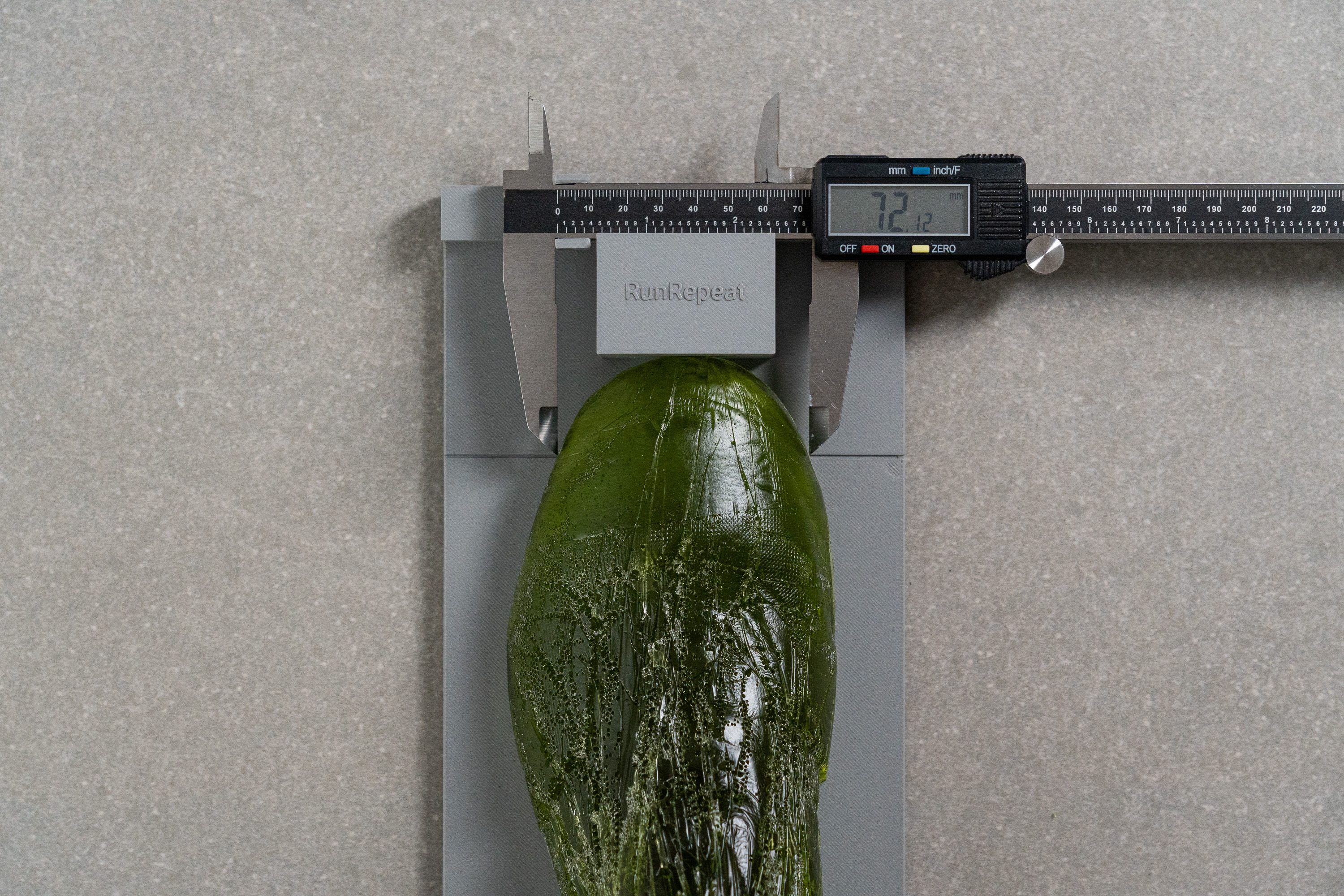
| Hoka Transport X | 72.1 mm |
| Average | 73.2 mm |
Toebox height
We found plenty of vertical space for toe movement, with a measurement of 28.7 mm. In our experience, this provides fantastic comfort, and we’re convinced that Hoka’s recent trend toward higher-volume uppers is worth noting.

| Hoka Transport X | 28.7 mm |
| Average | 27.1 mm |
Flexibility / Stiffness
We've mentioned that this is a stiff shoe, but we wanted to put some numbers to it.
After testing it in the lab, we found that the shoe scored 53.4N in our 90-degree bend test. That's almost twice the average!
This test follows an older methodology, which is why you don't see recently tested shoes in the chart. Results from different methodologies can not be compared.
| Hoka Transport X | 53.4N |
| Average | 28.1N |
Stiffness in cold (%)
So how does the Transport X perform in cold weather? We found that, like most shoes, it becomes stiffer. We measured 65.5N in the same 90-degree bend test we did in the lab.
We found an impressive 22.7% difference between the room temperature test and the cold-weather test. This is actually an excellent result.
The smaller the difference, the more consistent and reliable the shoe performs in various conditions!
| Hoka Transport X | 23% |
| Average | 33% |
Weight
At only 9.7 oz (274g), we can confirm that the huge Transport X feels light and it's... really light!
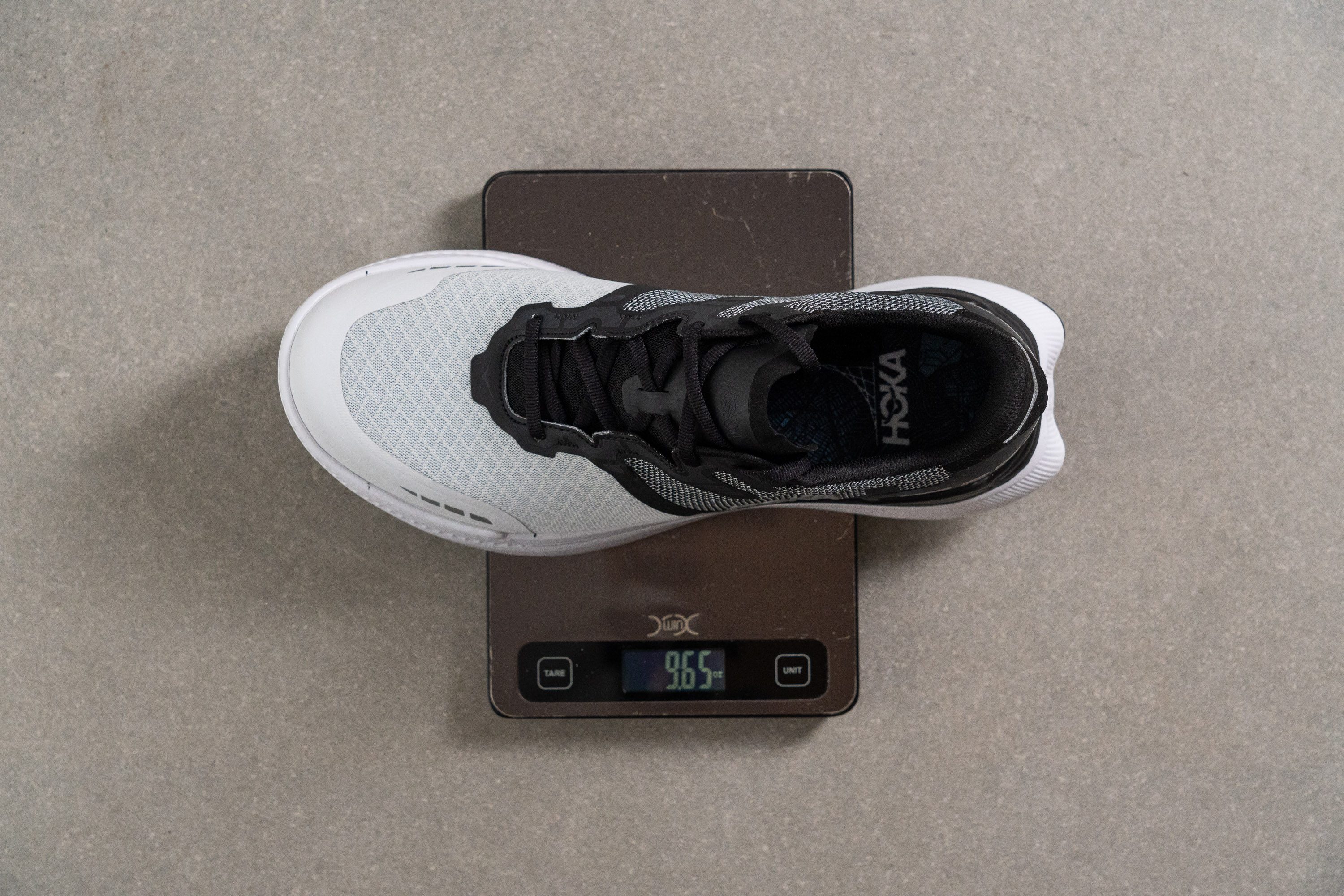
| Hoka Transport X | 9.7 oz (274g) |
| Average | 9.3 oz (264g) |
Breathability
For a shoe that's designed to be worn throughout the year—like the Transport X—breathability is key.
We put this one through our lovely smoke test in the lab and were thrilled to give it a perfect score of 5 out of 5.
Our light test just confirmed what we had already observed—the upper is super thin and allows air to flow easily. But we wanted to dig deeper to understand how they achieved this level of breathability.

Using the microscope we discovered that Hoka didn't just rely on making holes in the upper, like many other brands do, which can weaken the shoe.
Instead, Hoka used an ultra-thin engineered mesh that lets air pass right through.

However, keep in mind that this upper isn't as flexible as you'll find in some other everyday shoes—it's quite the opposite, actually.
| Hoka Transport X | 5 |
| Average | 3.7 |
Stability
Lateral stability test
Designed to be the ultimate do-it-all shoe, the Transport X aims for rock-solid stability. After putting it through our tests, we can confirm it's really stable.
Torsional rigidity
Most versatile shoes aren't super stiff, but they also usually don't have carbon plates.
We're not sure why Hoka put a trail-style, dual-forked carbon plate in the Transport X. But we do know that the shoe is extra-stiff and scored a 5/5 in our tests.
| Hoka Transport X | 5 |
| Average | 3.5 |
Heel counter stiffness
Maybe they should've named this shoe the Hoka Stiff X. It clocked a 5/5 in another one of our tests, this time for having a really rigid heel counter.
While this design adds a lot to its stability, we found that it could make the shoe less comfortable during runs or even walks.
| Hoka Transport X | 5 |
| Average | 2.9 |
Midsole width - forefoot
We discovered that the Transport X has a midsole width of 118.5 mm. That's wider than most running shoes on the market.
The wider landing platform tells us the design is, again, geared toward stability.

| Hoka Transport X | 118.5 mm |
| Average | 114.4 mm |
Midsole width - heel
We found that the heel is also quite wide. This makes it an excellent pick for heel strikers who often have trouble with stability in other all-around shoes.

| Hoka Transport X | 94.4 mm |
| Average | 90.7 mm |
Durability
Toebox durability
While this shoe excels in breathability, we found that it doesn't hold up as well in durability. During our dremel test on the toebox in the lab, the Transport X didn't perform too well (1/5).
Hoka is aware of this issue. That's why they've added a larger-than-average plastic overlay on part of the toebox. This helps to prevent damage to the toe cap.

| Hoka Transport X | 1 |
| Average | 2.6 |
Heel padding durability
We found that, like many other shoes, the heel also scored low in durability—just 1 out of 5 in our second dremel test.
While it sounds alarming, it's mostly a concern for those who usually wear out the heels of their shoes. For most runners, we don't think this will be a problem.
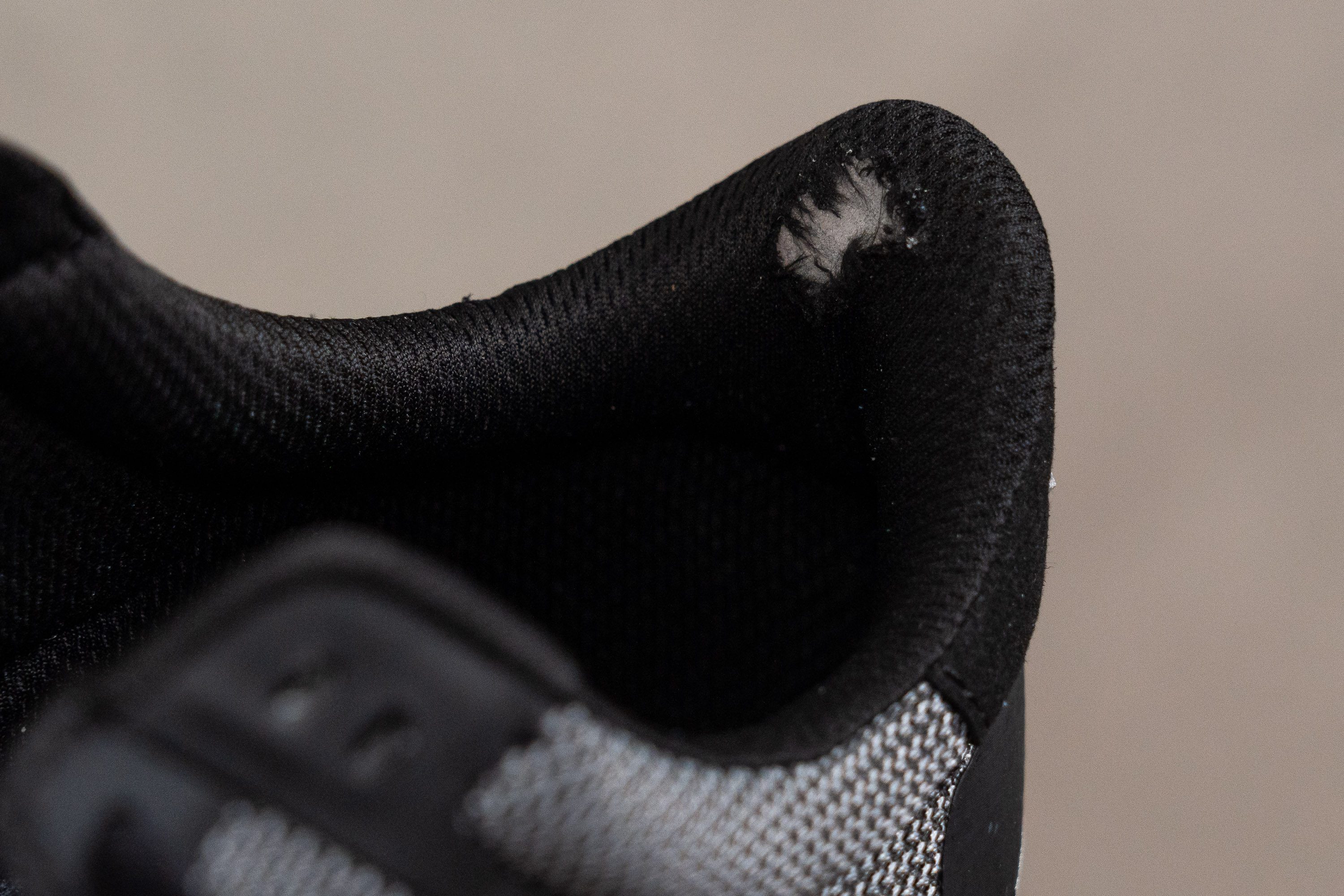
| Hoka Transport X | 1 |
| Average | 3.4 |
Outsole hardness
We measured the outsole hardness in the lab and found it to be pretty average at 80.5 HC.

It seems like Hoka's goal is to strike a balance between durability and grip.

| Hoka Transport X | 80.5 HC |
| Average | 79.2 HC |
Outsole durability
For the third and final round with the dremel in the lab, we checked out how durable the outsole really is.
We ended up with a 0.8-mm dent in the rubber—a pretty average outcome.
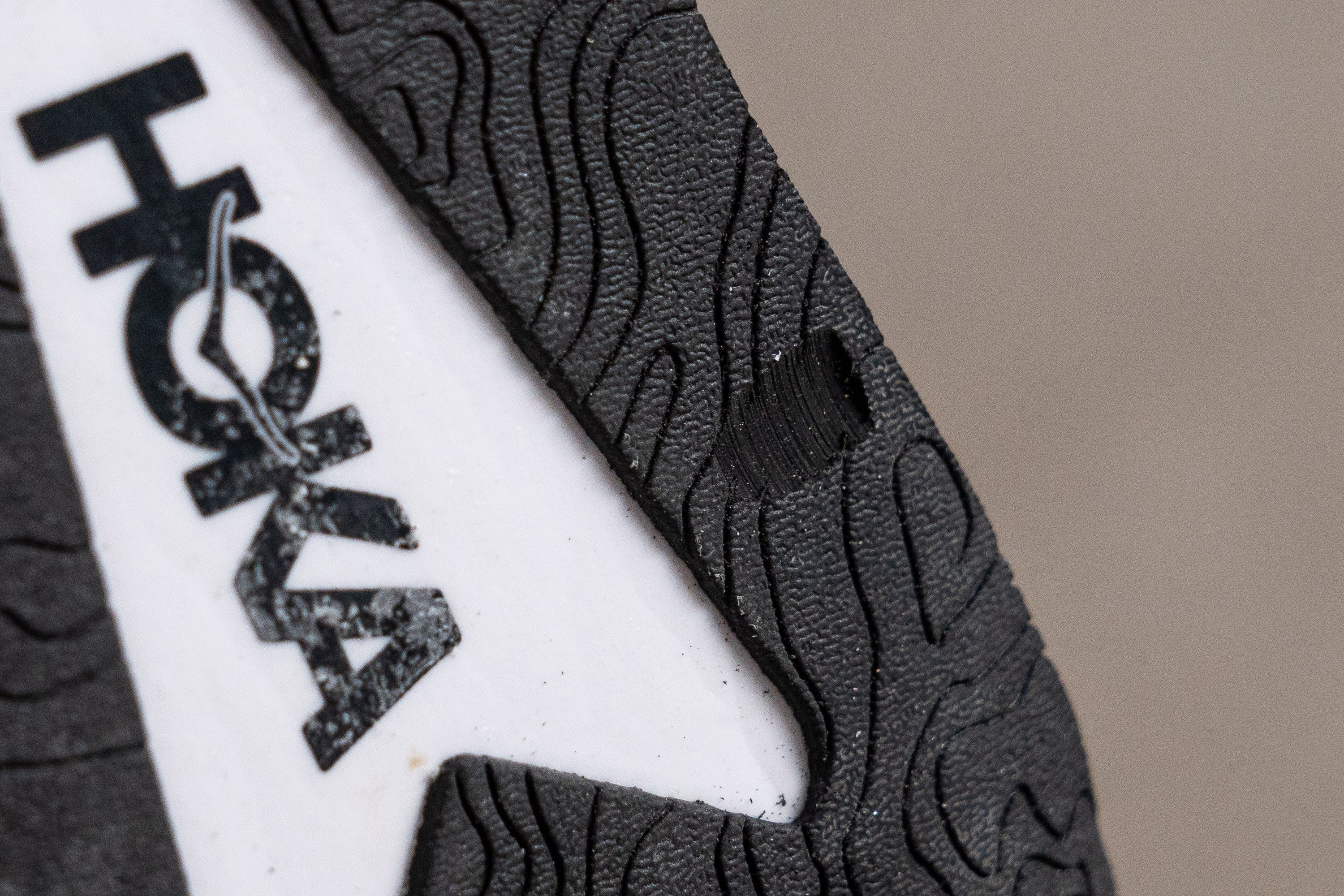
| Hoka Transport X | 0.8 mm |
| Average | 1.1 mm |
Outsole thickness
However, we were disappointed when we found out just how thin the outsole is. Measuring only 1.8 mm, it's clear that Hoka was more focused on making the shoe lightweight than on making it last.
Durability definitely took a backseat with the Transport X.

| Hoka Transport X | 1.8 mm |
| Average | 3.2 mm |
Misc
Insole thickness
We measured the insole of the Transport X and found that it's only 4.5 mm thick. There's really nothing special to note about it.
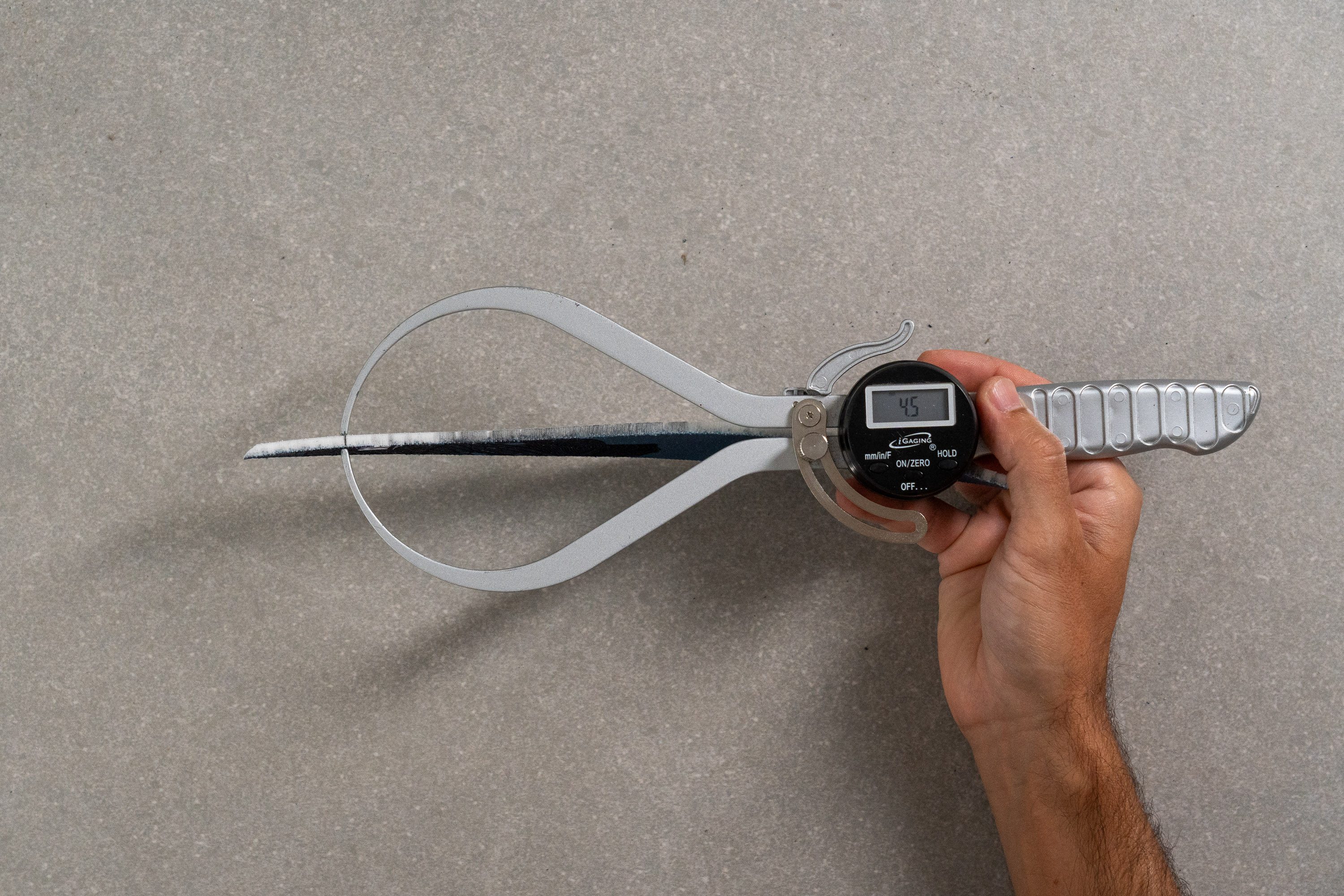
| Hoka Transport X | 4.5 mm |
| Average | 4.5 mm |
Removable insole
We found that removing the insole was easy. Plus, since the shoe isn't super narrow, it can comfortably accommodate insoles from other shoes or custom orthotics.
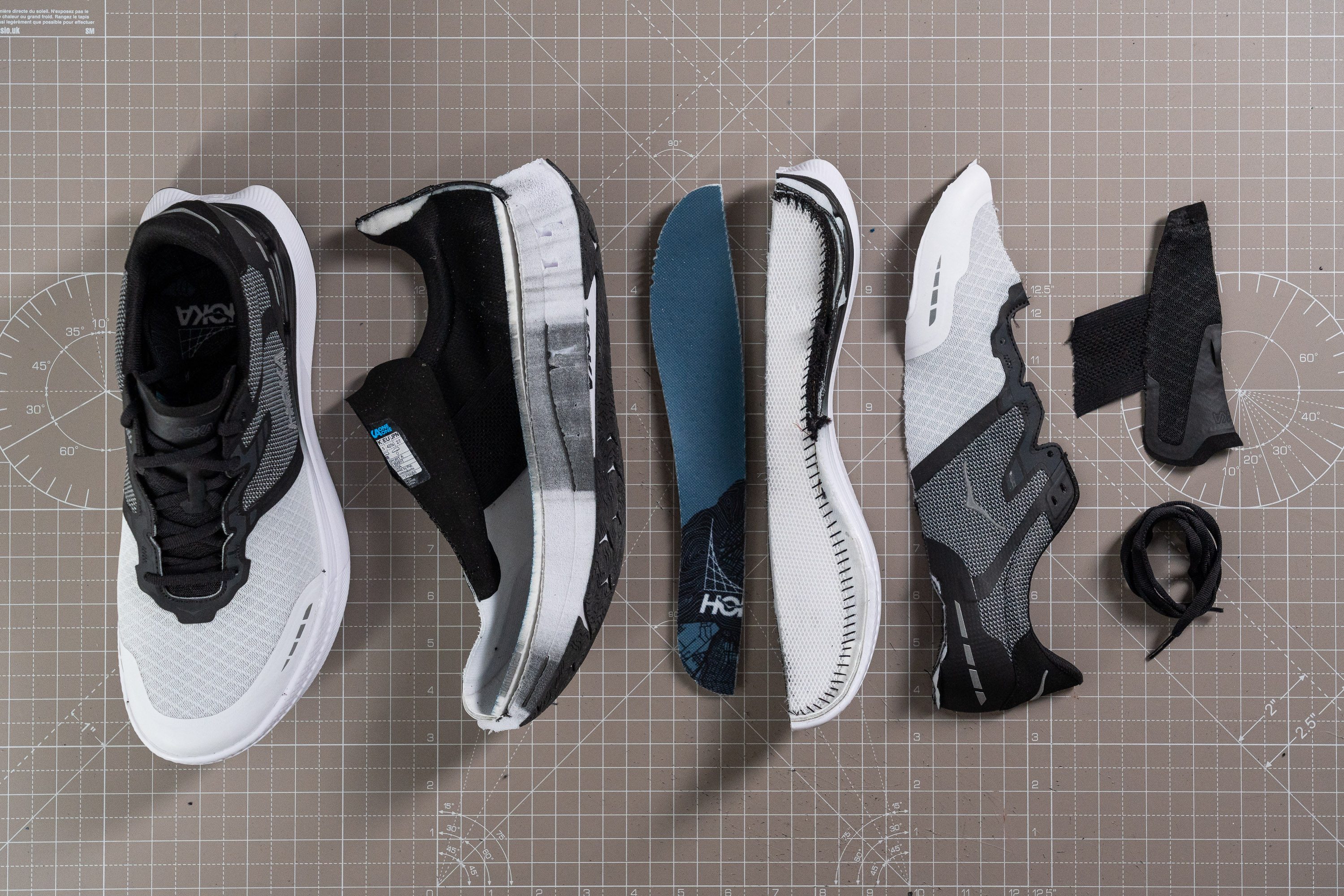
| Hoka Transport X | Yes |
Midsole softness in cold (%)
We put the Transport X in the freezer for 20 minutes to see how they'd hold up in cold weather. After taking them out, we measured their softness again with the durometer.
We found that the reading was 27.5 HA.
The measurement only went up by 20.9%, which is really impressive!
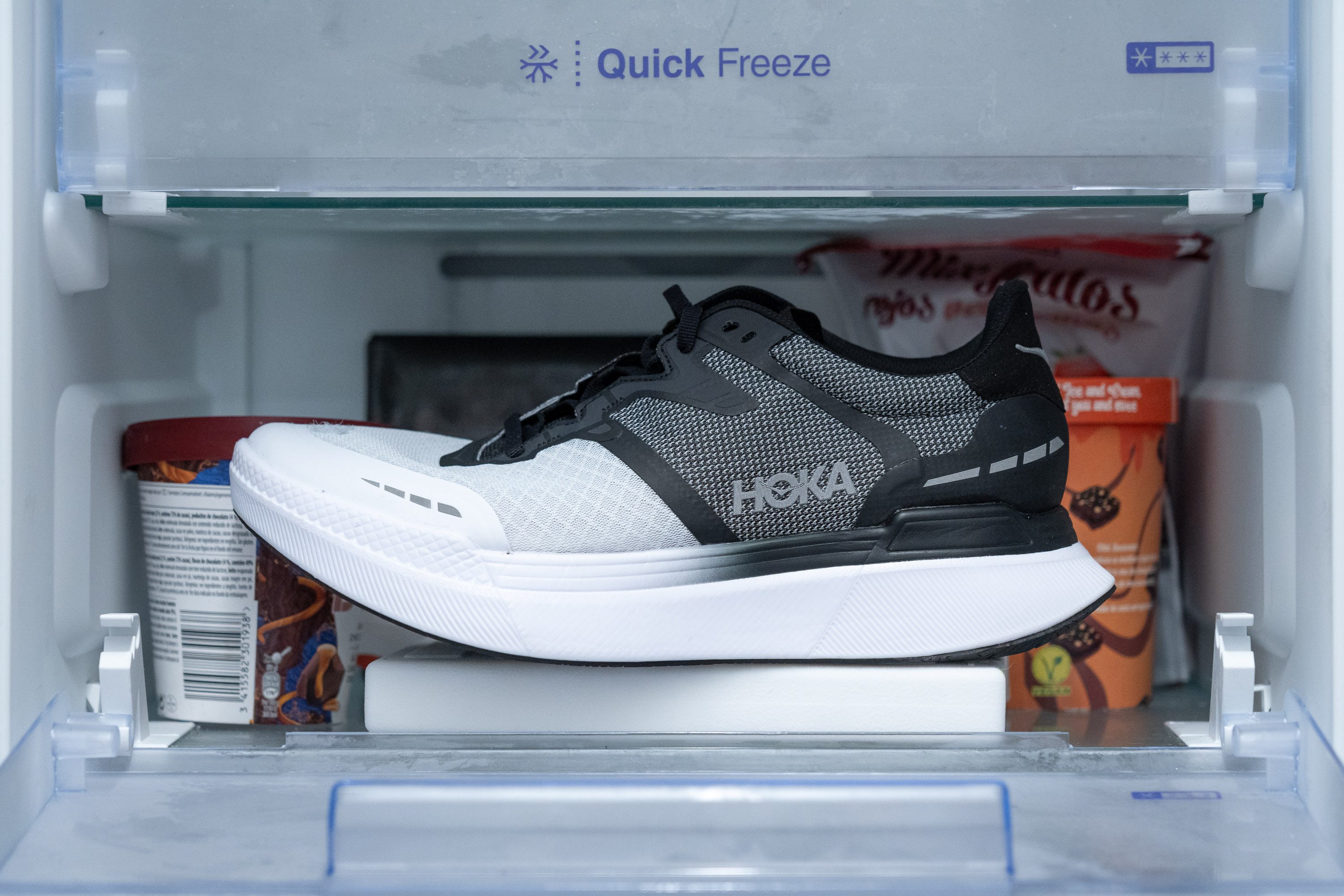
| Hoka Transport X | 21% |
| Average | 24% |
Reflective elements
Hoka promotes this shoe with "360-degree reflectivity," a feature that's pretty rare in running shoes.
We've got to say, we're big fans! It has multiple shiny, reflective strips that really catch the eye. This is an awesome safety feature that we absolutely love.

| Hoka Transport X | Yes |
Tongue padding
During this review, we mentioned that this shoe is pretty light for its massive stack height.
One big reason for that is the super-thin tongue. We measured it at just 1.7 mm, making it more like what you'd find in a racing shoe rather than in typical cross-training or easy running shoes.
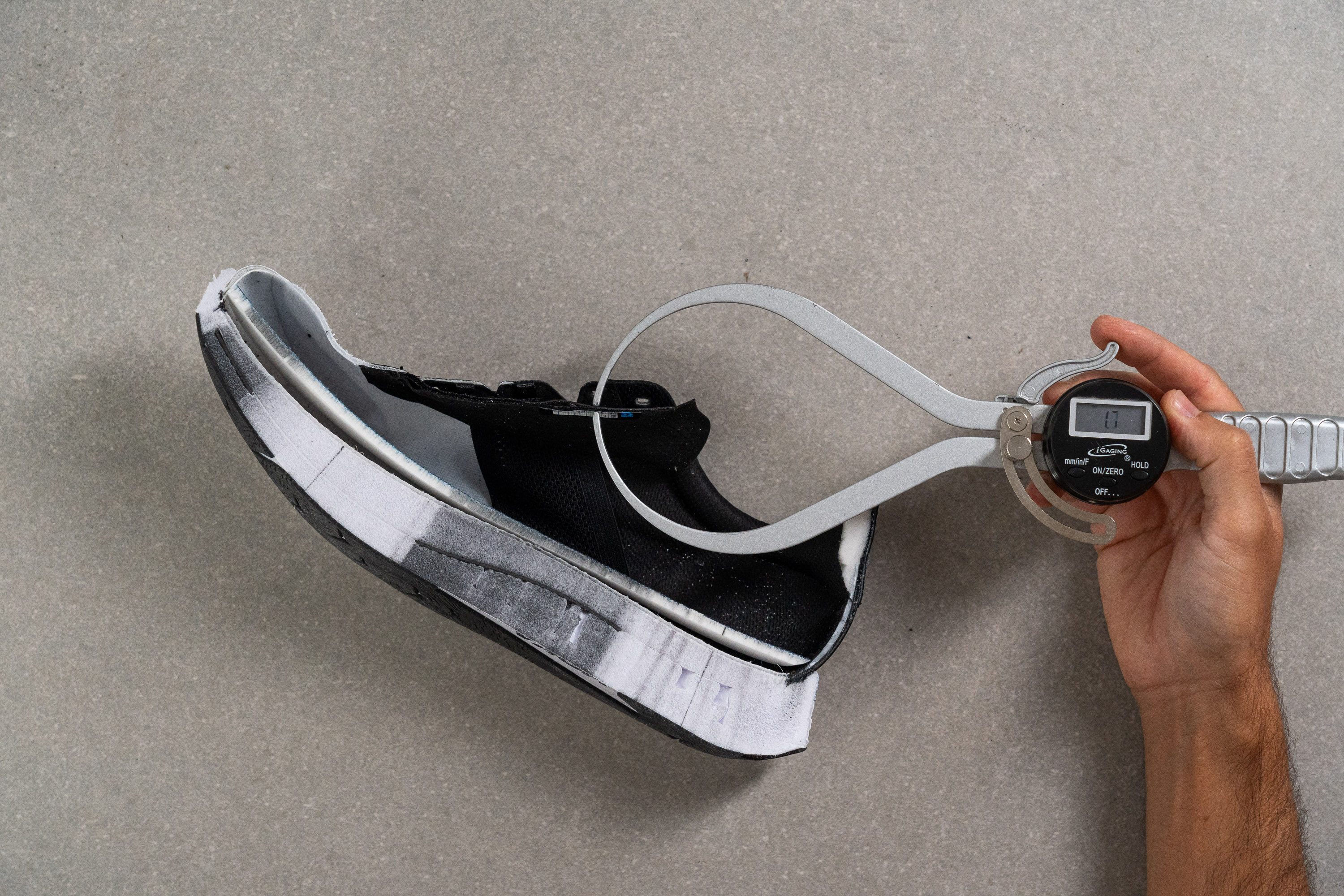
| Hoka Transport X | 1.7 mm |
| Average | 5.8 mm |
Tongue: gusset type
The shoe's tongue is semi-gusseted, helping to keep our foot securely in place while running. Honestly, we'd find it surprising if a shoe that costs two hundred bucks didn't have this feature.
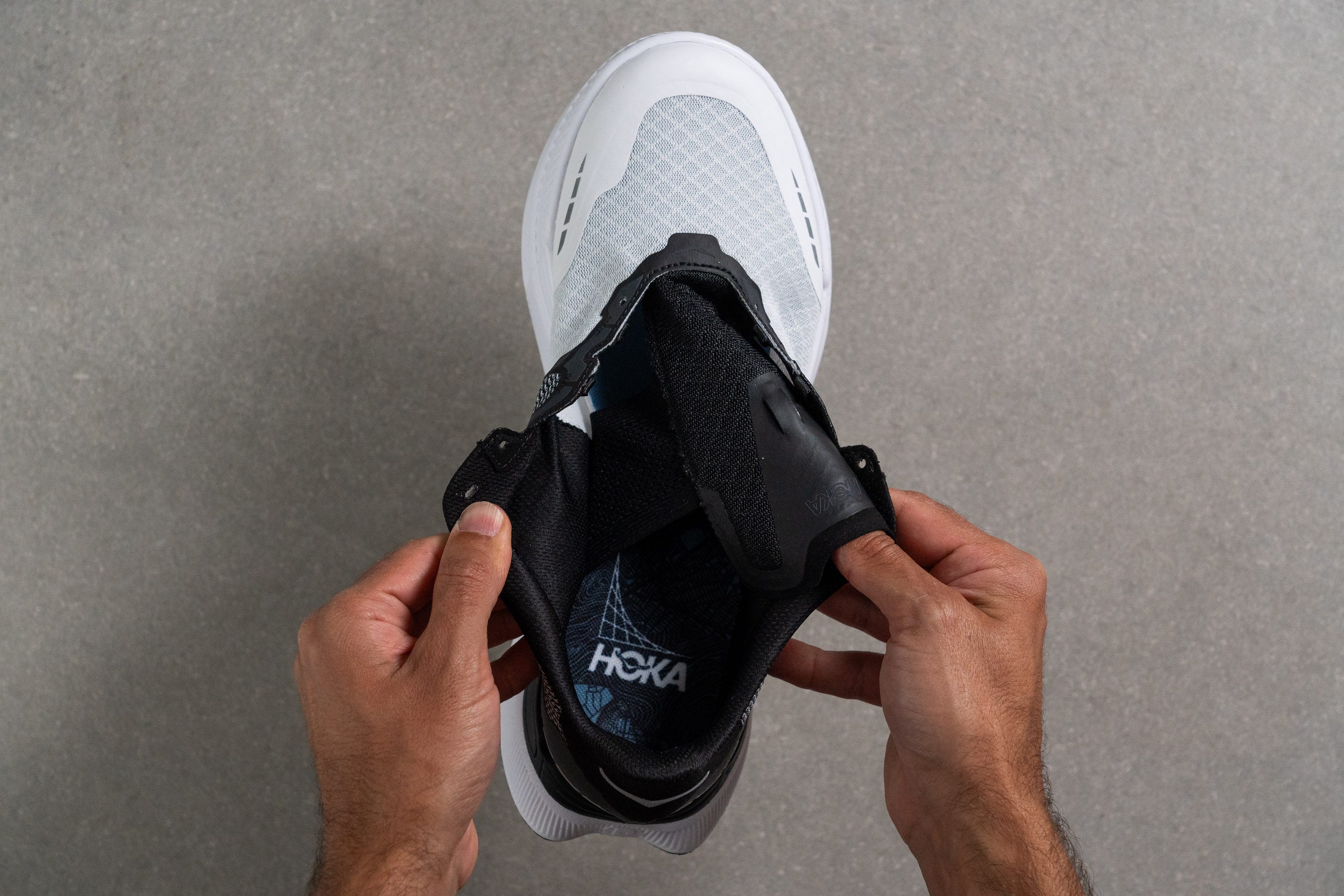
| Hoka Transport X | Both sides (semi) |
Heel tab
We noticed the shoe doesn't have a heel tab, but getting your feet into it is still pretty easy. So the lack of a heel tab really comes down to personal taste, rather than being a big issue.
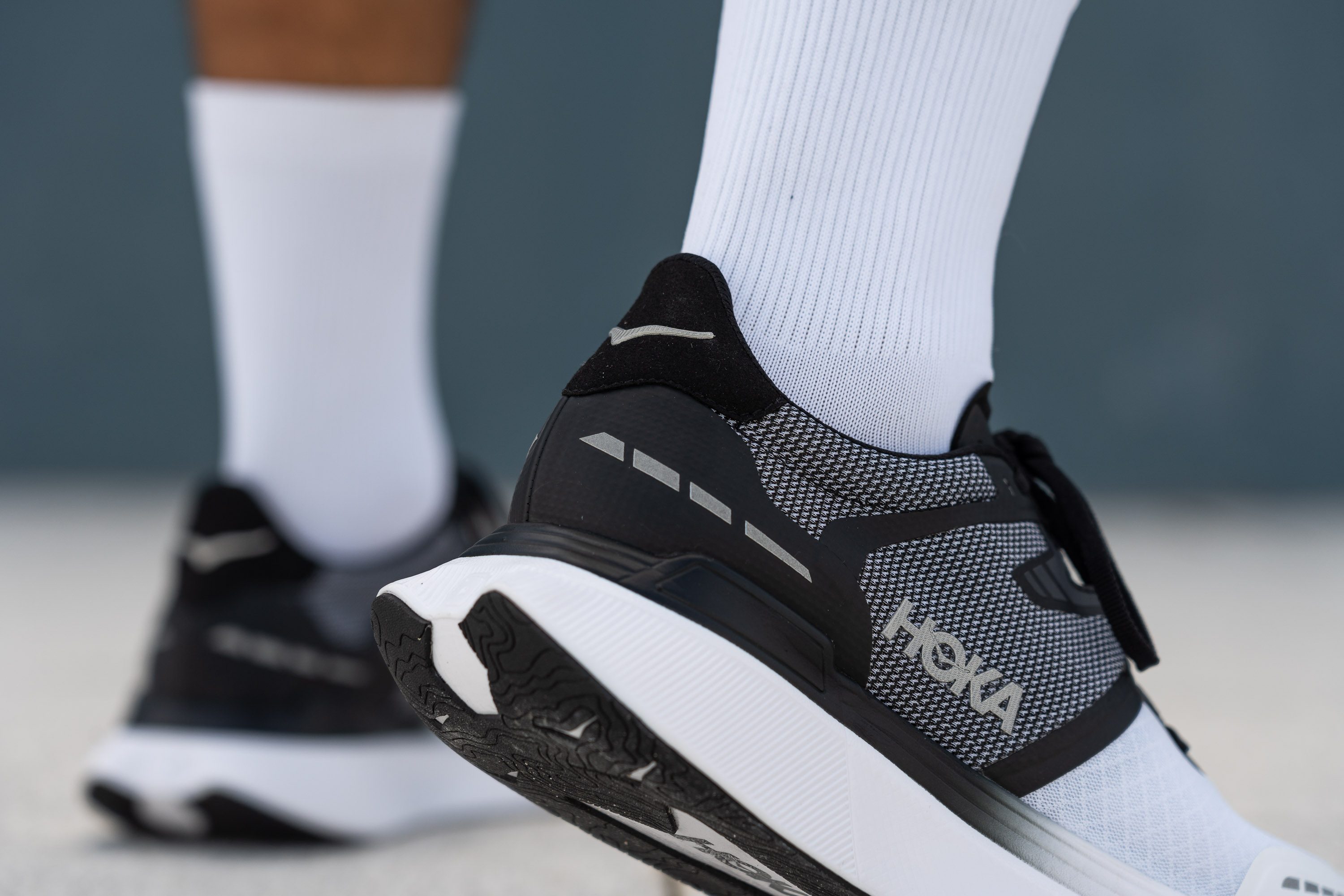
| Hoka Transport X | None |
















































